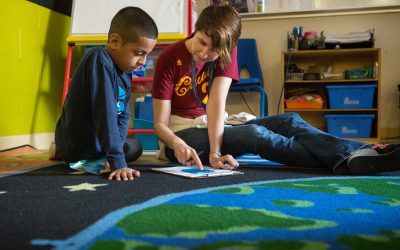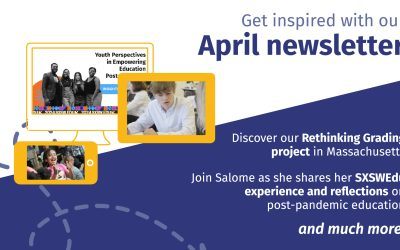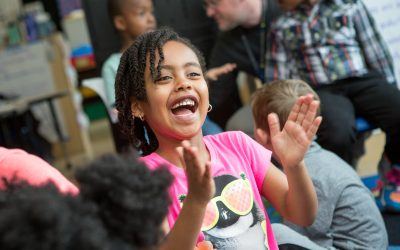Student accuses teacher of lying. Student is right. Nothing is done. Sounds like an event of a distant past? Nope. King Johnson’s recent note to his teacher this month reminds us, telling lies is not an aberration in schools, but a regular occurrence:

I suspect eight year old’s King Johnson’s note has gone viral for many reasons. First, it’s always quite humorous when a child takes an authoritarian stance towards an adult. Secondly, King’s proclamation, that the only “Christopher I acknowledge is Wallace” is quite witty and culturally appropriate to peeps from my generation who will forever remain loyal to the rapper formerly known as Biggie Smalls. Finally in its essence, King’s note highlights a reality most adults have experienced at some point in their lives. In getting older, you realize that the things you were told as a child were not always true. Understanding that adults do sometimes lie is part of adult growing pains, but for millions of students of color throughout the country, being lied to is a reality in their daily lives at school.
How? And more importantly, why? Well, King’s teacher’s response, “I’m very disappointed in your journal,” is quite revealing. Her response is a prime example of the culture of students of color is often misinterpreted as inappropriate or disappointing whenever they resist schooling and curricula structures, which do not serve their needs. In the United States, for example, the teaching force comprises of 85% white females while 45% are students of color, causing what scholars have described as a cultural mismatch between students and teachers. Every day, students of color are lied to through curriculum polices that impose white cultural values: They are taught to believe in His-story, a story that tells of the “triumphfulness” of past White historical actors with occasional reference to people of color.
Social studies curriculum as such is taught from a Eurocentric and Western worldview that is culturally relevant to the needs and imagination of the dominant group in United States. Ultimately, scholars argue that curriculum choices do not just represent topics to be taught, but bolster and privilege certain values and histories over others. Within the field of social studies for example, curriculum topics are culturally relevant to White people. This is why everyone knows about Christopher Columbus, but do not know of the Africans who came to the Americas before Columbus.

Cultural relevance means that school topics, stories, frames of reference, and schema used in schools are taught from the perspective of Whites for the benefit of white peoples. Since people of color are not a part of the dominant group, their needs and cultures are often marginalized, viewed as deficit or inappropriate because whiteness is the invisible norm. Therefore, a cultural bias exists towards children of color, which manifests in teacher lounge conversations colored by statements such as, “We need to teach students in these neighborhoods the value of education. Or, they just don’t like to read.” When you dig deeper into the underlying tone of such comments, the message suggests that students of color do not measure up well against white children.
One solution to combat the negative consequences of this cultural mismatch between students and teachers is to provide teachers with avenues and learning experiences that build their cultural competence, enabling them to develop an awareness of their own culture and others. In her noted research, Gloria Ladson-Billings studied the pedagogical practices of African American teachers and their students of African descent. She highlighted the successes her teachers achieved in response to the deficit-thinking paradigm, which historically has posited children of color as having cognitive and cultural disadvantages. Instead, she showed that successful African American teachers employed a culturally relevant pedagogy whereas:
- Teachers had high expectations for all students.
- They helped students appreciate their own cultures and develop cultural competence.
- Students engaged in a critical examination of the world, strengthening their socio-political consciousness.
Since 1995 when Ladson-Billings exposed this research, the term culturally relevant pedagogy has been a ubiquitous term used in education. Everyone knows about it, but why then is it not a staple approach to teaching students of all races? Ladson-Billings explained that CRP educators just don’t use a list of strategies to engage students, but embody a social justice stance in education. They believe the context in which students learn matters. More importantly, they recognize that an inequitable relationship exists between students of color and society. If King’s teacher had understood that the structures of schooling do not work for him, but against, perhaps she might have been more inclined to take an inquiry approach instead of expressing her disappointment.
If you’re an educator, you have to realize that you are a cultural being and as so, you bring a particular set of assumptions and values about what needs to be taught and why in your classroom. Every decision you make is because of culture. The first step in combating educational inequity is, therefore, to look within. Here are some questions to help you get started:
- What is my culture?
- What values do I believe in? Why do these values come from?
- Do I believe my culture is right and others are wrong?
- What do I know about each of my student’s cultures?
- How can I learn more about my student’s culture?
Take the next week to answer these questions. In the next article, we will discuss what to do with your burgeoning or new cultural awareness. Till then, seek to understand first before judging, or in this case stating your disappointment. Next Series:
- Embodying Culturally Relevant Pedagogy
- CRP and urban classrooms
Curriculum and Assessment Design | Teaching and Learning
“Creativity follows mastery.” These are the words of Benjamin Bloom, who believed that learners are capable of incredible things if they have access to powerful learning environments. This is why we’ve chosen the name “Bloom” for our knowledge-sharing initiative. Bloom is all about our stake in helping to build the capacity of practitioners and leaders who work with our most marginalized youth to reimagine, recreate, redesign our models for learning–within schools and beyond. For us, this is fundamentally a matter of social justice. Reach out if you’d like to submit a guest post, or sign up for our monthly newsletter: Bloom@reDesignu.org.





